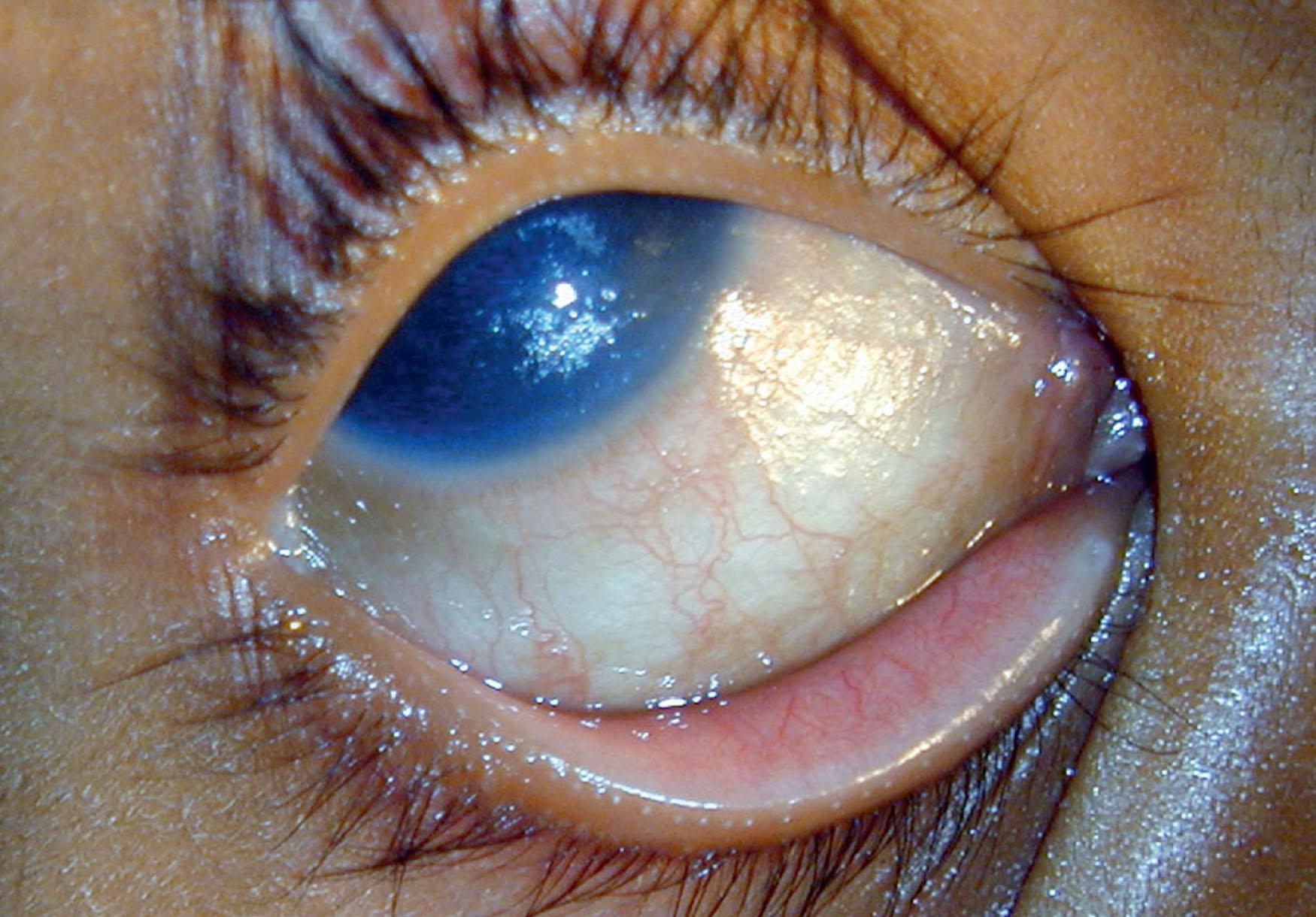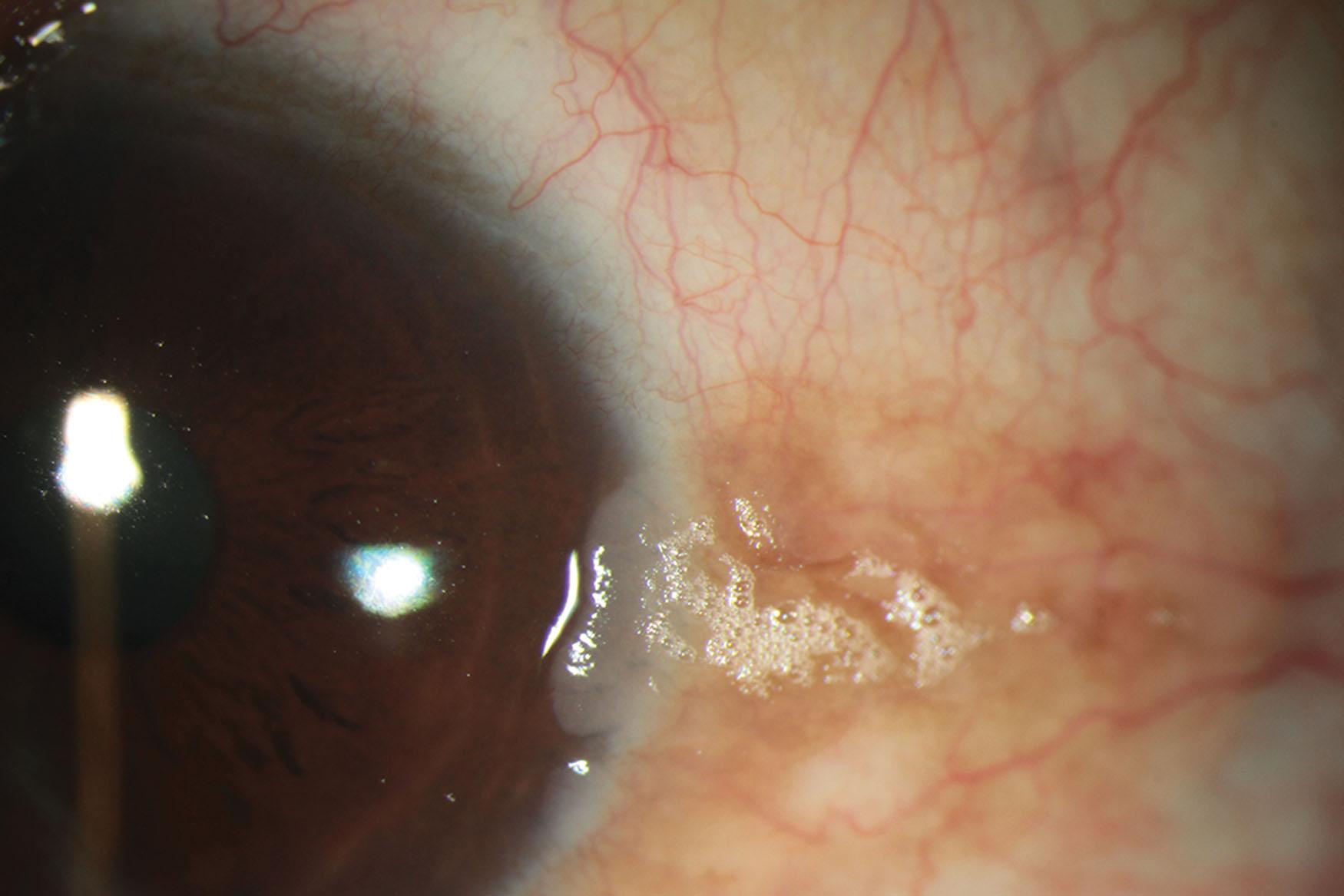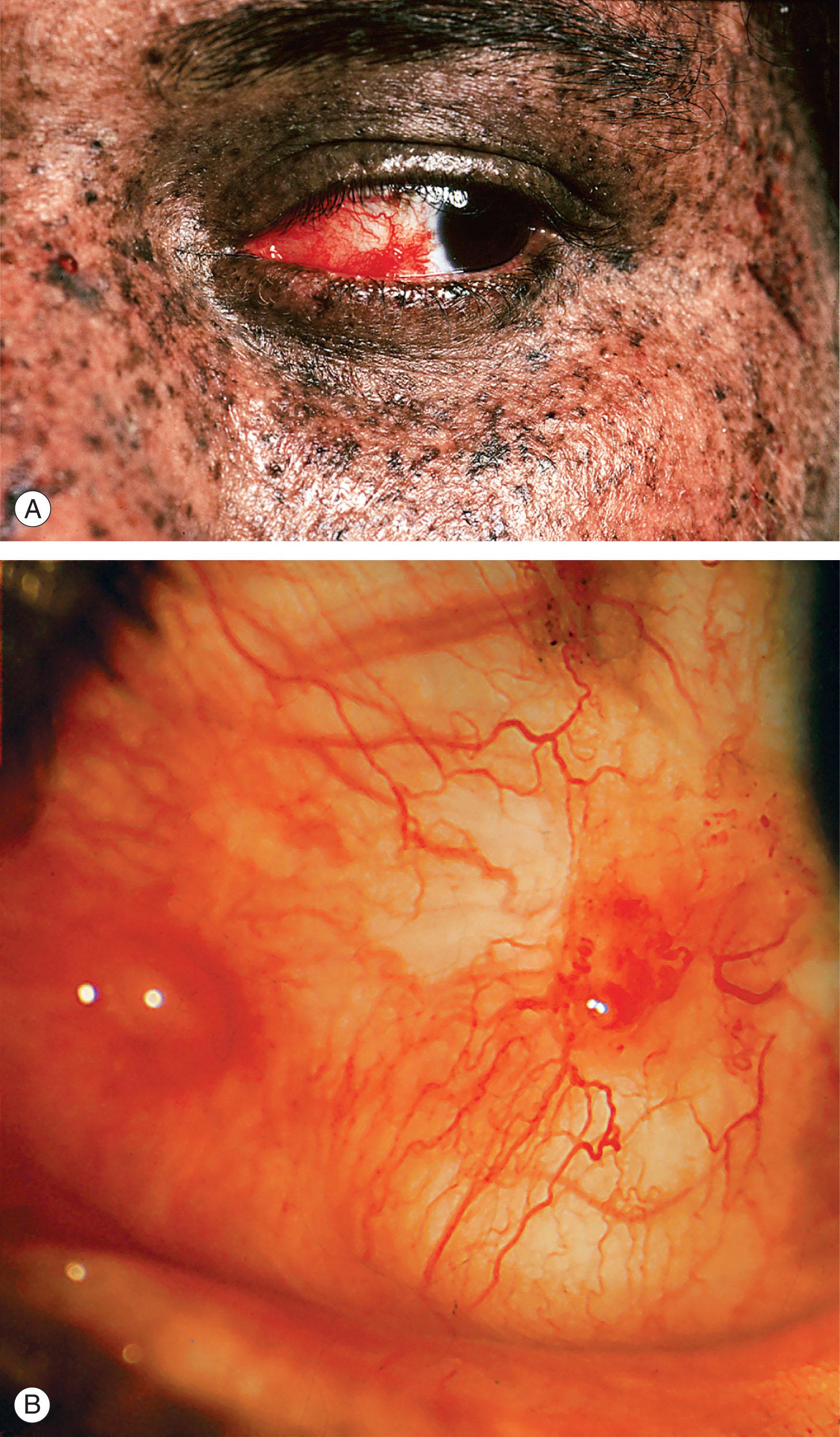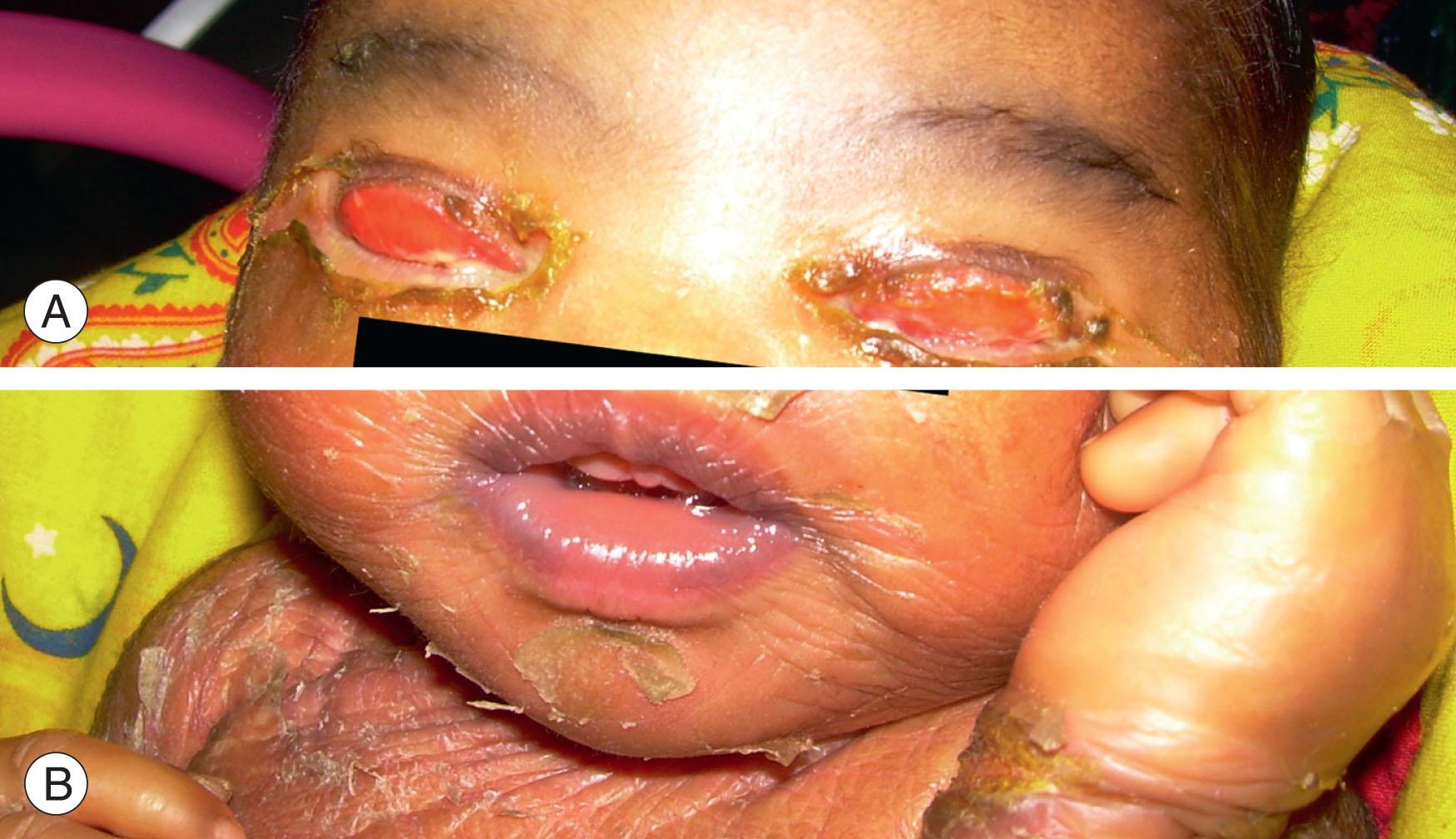Physical Address
304 North Cardinal St.
Dorchester Center, MA 02124
![]() For video accompanying this chapter see ExpertConsult.com. See inside cover for access details.
For video accompanying this chapter see ExpertConsult.com. See inside cover for access details.
The conjunctiva is a thin, translucent, vascular mucous membrane that lines the inner surface of the eyelids and the anterior surface of the eyeball as far as the limbus. This tissue is arranged in a sac-like fashion and is composed of a palpebral region (covering the inner aspects of the lids), a bulbar region (covering the surface of the sclera), a forniceal region, and a medial semilunar fold.
The palpebral part of the conjunctiva is more adherent to the underlying tarsus than the bulbar part. The loose adherence is responsible for the occurrence of chemosis of the bulbar conjunctiva during inflammation. The bulbar conjunctiva has attachments with the lateral rectus muscle through fine fibrous slips, and hence plays a role in the maintenance of the horizontal movements of the eyeball. While the palpebral conjunctiva shares its blood supply with the eyelids, the bulbar component is supplied by the anterior ciliary arteries. The nerve supply to the conjunctiva is through the lacrimal, supraorbital, supratrochlear, and infraorbital branches of the trigeminal nerve.
The conjunctival epithelium varies from two to five cells in thickness and is continuous with the corneal epithelium at the limbus and with the skin at the margin of the lids. While the bulbar conjunctiva is lined by a stratified non-keratinized squamous epithelium, the forniceal and tarsal regions are lined by columnar and cuboidal types, respectively. A key constituent of the cellular architecture is the presence of goblet cells, which accounts for 10% of the basal cells of the conjunctival epithelium. These cells are more prevalent in the medial forniceal and palpebral regions, and play a vital part in secreting the mucin component of the tear film. There is an increase in the number of these cells during chronic inflammation of conjunctiva, while conditions like pemphigoid and vitamin A deficiency cause a reduction in their numbers. Other cell types that nestle within the epithelial layers include melanocytes, Langerhans cells, and intraepithelial lymphocytes.
Beneath the epithelium lies a loose structure called the substantia propria. This structure contains different cell types that mediate immune responses (mast cells, plasma cells, eosinophils, and lymphocytes) interspersed in a vascular network. This arrangement of immune cells, commonly referred to as conjunctiva-associated lymphoid tissue, existing in a vascular environment, is continuously exposed to potential external infective agents and allergens and thus serves as a perfect setting for inflammation to set in.
Beneath the conjunctiva lies a fibroelastic tissue, Tenon's capsule, which surrounds the eyeball from the corneoscleral junction to the optic nerve. In children, the conjunctiva–tenon complex is thicker, with a larger proportion of fibroblasts, compared to adults. In consequence, surgeries such as trabeculectomy performed in children, especially without adjuvant procedures like intraoperative use of antimetabolites, may fail due to the aggressive healing response induced by these fibroblasts.
The ocular manifestation of vitamin A deficiency is termed xerophthalmia, and affected individuals present with night blindness, conjunctival xerosis, Bitot's spots, corneal xerosis, keratomalacia, and the “xerophthalmic” fundus (see Chapter 49 ).
In xerophthalmia, the conjunctival epithelium is transformed from the normal columnar to the stratified squamous type. There is an associated loss of goblet cells, formation of a granular cell layer, and keratinization of the surface. The conjunctiva loses its normal luster and becomes dry or unwettable ( Fig. 29.1 ). It is almost always bilateral. A classic ocular sign is Bitot's spots, which is a superficial, scaly, gray area on the interpalpebral region of the bulbar conjunctiva ( Fig. 29.2 ). Corynebacterium xerosis can colonize these spots, and produce a foamy appearance because of the gas-forming nature of these organisms. If untreated, the condition involves the cornea, causing corneal xerosis and finally corneal melting (keratomalacia).


The diagnosis of xerophthalmia can usually be made clinically. In doubtful cases, impression cytology of the superficial layers of the conjunctival epithelium may be helpful to show the loss of goblet cells and keratinization of epithelial cells. In children 12 months of age or older, retinol palmitate (110 mg) or retinol acetate (200,000 IU) are given orally immediately, and the dose is repeated the following day. An additional dose should be given 2 weeks later to boost liver resources. Children between 6 and 11 months should receive only half this dose, and children less than 6 months only one-quarter.
Parenteral administration is indicated in children with gastrointestinal problems. In these cases, intramuscular injection of 55 mg of water-miscible retinol palmitate (100,000 IU) is administered, which replaces the first oral dose. This is repeated the next day. Children less than 1 year old are treated with vitamin A in half the prescribed dosage. After the acute phase is over, dietary supplements with provitamin A-rich foods should be provided.
Xeroderma pigmentosum is a rare genetic disorder with autosomal recessive inheritance, characterized by impaired ability of epidermal cells to repair sunlight-induced damage to DNA. Symptoms appear in early childhood ( Fig. 29.3A ). Conjunctival involvement occurs mostly in the interpalpebral area in the form of xerosis, telangiectasia, chronic conjunctival congestion, pigmentation, pinguecula, and pterygium. Ocular surface neoplasms such as squamous cell carcinoma, basal cell carcinoma, and malignant melanoma may occur, with a predilection for the limbal area (see Chapter 30 ) ( Fig. 29.3B ). Corneal changes include exposure keratitis, band-shaped nodular keratopathy, scarring, ulceration, vascularization, and perforation.

This is a congenital disorder with a classical triad of cutaneous facial angioma, leptomeningeal angioma, and ocular involvement (see Chapter 20, Chapter 36 , and 68 ). When the facial angioma occurs in the distribution of the ophthalmic division of the trigeminal nerve, dilated episcleral and conjunctival vessels with aneurysm formation in the limbal area are commonly seen. Glaucoma is a frequent accompaniment (see Chapter 36 ), especially in patients with severe conjunctival involvement.
Ichthyosis is a heterogeneous family of at least 28 genetic skin disorders. Most pedigrees have either autosomal dominant or X-linked inheritance. A rare autosomal recessive form, lamellar ichthyosis, occurs. In all these conditions, dry scaly lesions are present, predominantly over the upper half of the body, mainly around the neck, mouth, and trunk. The conjunctiva may become inflamed, primarily or secondarily, due to lid anomalies like ectropion. A papillary reaction may develop ( Fig. 29.4 ). The treatment is to provide adequate lubrication and to correct the lid abnormalities, if present. Allogenic limbal stem cell transplantation for ocular surface stabilization has poor prognosis in ocular ichthyosis, often requiring multiple procedures and potentially keratoprosthesis.

Become a Clinical Tree membership for Full access and enjoy Unlimited articles
If you are a member. Log in here